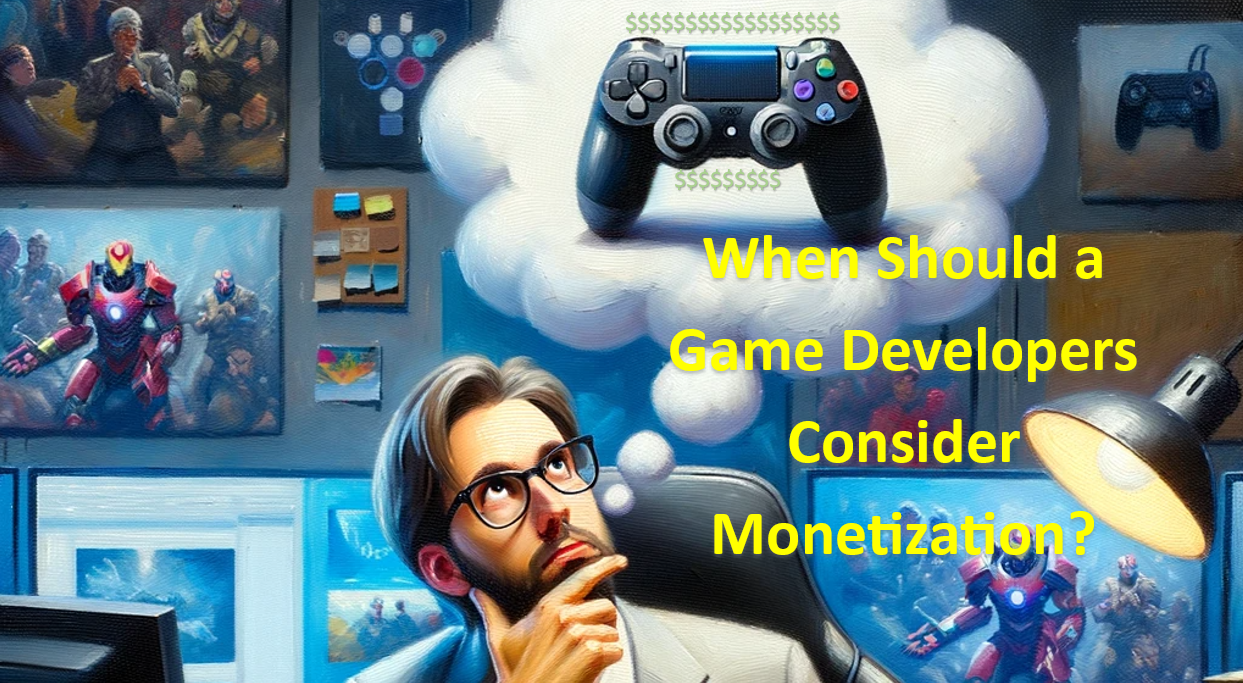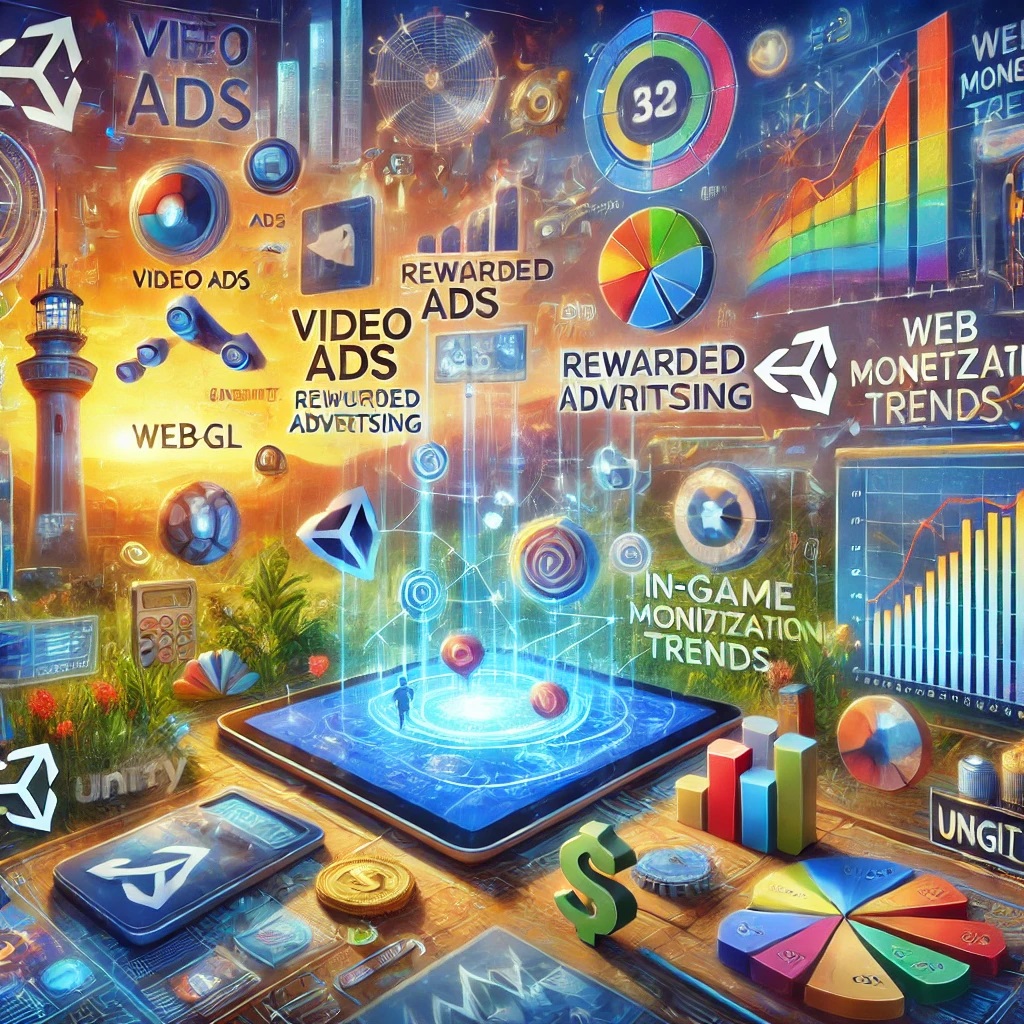Monetization is more than just a means to generate revenue; it’s the lifeblood of the gaming industry. Without effective monetization strategies, games would certainly struggle to recoup any investments, let alone run a sustinable business. In this crowded marketplace, where players have a plethora of options, developers need to be savvy not just about creating captivating gameplay but also designing a sustainable economic model.
So in this post, my intention is reflect on a question that most game developers wonder. That is, When Should a Game Developers Consider Monetization?
Pre-development Considerations
-
Charting a Course Before Setting Sail: The Pre-Development Phase
Just as a strong foundation ensures the stability of the structure above, having a clear monetization strategy provides a roadmap for the game’s commercial viability and sustainability. By considering monetization early on, developers can anticipate potential challenges and ensure that revenue-generating mechanisms align seamlessly with the game’s narrative and mechanics.
-
The Delicate Dance: Marrying Game Design with Monetization
Game design, driven by the vision of offering players a captivating and immersive experience, often focuses on storytelling, gameplay mechanics, and artistic expression. Meanwhile, monetization aims to generate revenue, which may involve introducing in-game purchases, ads, or subscription models. The key is to ensure these two elements coexist without one overshadowing the other. Monetization should feel like a natural extension of the game, not an intrusive element.
Whether it’s through cosmetic items that allow players to personalize their experience or value driven DLCs that expand the game’s narrative, the monetization strategy should complement and enhance the gameplay, not detract from it.
 Development Phase
Development Phase
-
The Retrofitting Quandary: Integration vs. Afterthought
One of the most challenging decisions during the development phase is whether to integrate monetization from the outset or retrofit it later. Retrofitting a monetization model into an already-developed game can be likened to remodeling a house to accommodate a feature it wasn’t initially designed for. Not only is technically cumbersome, but it can also result in a disjointed experience.
On the other hand, integrating monetization from the beginning allows for a more holistic design approach. When developers consider monetization strategies in tandem with game mechanics, narratives, and visuals, the result is often a more cohesive and harmonious player experience.
-
Striking the Balance: Revenue and Player Experience
At the heart of game development lies the player. Their experience, engagement, and satisfaction are paramount. As such, while monetization is vital for the game’s financial success, it should never come at the expense of gameplay quality. The introduction of monetized elements should be strategic and thoughtful. For instance, microtransactions can offer additional value without creating a “pay-to-win” environment, which can frustrate and alienate players. By focusing on fairness and transparency, developers can craft monetization strategies that resonate with players, fostering goodwill and trust.
-
The Power of Playtesting: Listening to the Players
Regular playtesting throughout the development phase is invaluable. It provides developers with a real-time gauge of how players are responding to both the game itself and its monetization elements. Playtesters, as representative samples of the potential player base, can offer insights into what feels rewarding, what seems intrusive, and where the balance between gameplay and monetization might need recalibration. By continually iterating based on this feedback, developers can fine-tune their approach, ensuring that the final product is both commercially viable and player-centric.
Post-launch and Live Operations
-
Adapting in the Aftermath: The Dynamics of Post-Launch Adjustments
The launch of a game isn’t the end of its monetization journey; in many ways, it’s just the beginning. The post-launch phase offers developers a unique vantage point. With the game out in the wild, they can observe real-world player interactions and make adjustments to the monetization strategy as needed. This flexibility is invaluable. For instance, if certain in-game purchases aren’t resonating with players, developers can tweak pricing, offer bundles, or introduce new items to maintain engagement and revenue streams. Such post-launch refinements, driven by real player data, ensure that the game remains economically viable while continually evolving to meet player expectations.
-
A Continuous Dialogue: Harnessing Feedback and Metrics

In today’s connected gaming landscape, developers have an unparalleled opportunity to collect feedback and metrics from their player base. Tools like in-game surveys, feedback forms, and analytics dashboards provide a wealth of information about how players are interacting with monetized elements. Are players dropping off after encountering a particular paywall? Is there a surge in purchases during specific in-game events? By analyzing these patterns and listening to direct player feedback, developers can make informed decisions, tailoring their monetization strategies to what players value most. This continuous dialogue fosters a community-centric approach, ensuring that players feel heard and valued.
-
Evolving with the Times: Monetization in Expansions and DLCs
As games grow and expand, so too do their monetization opportunities. Updates, expansions, and DLCs (Downloadable Content) represent new horizons for both gameplay experiences and revenue generation. These additions can introduce new monetized elements—be it in the form of cosmetic items, new story arcs, or gameplay mechanics. By offering fresh content that’s intricately tied to monetization, developers can encourage both player retention and increased spending. However, it’s crucial that these monetized expansions feel like genuine value additions, not just opportunities for cash grabs. When done right, they not only bolster the game’s longevity but also deepen player investment and loyalty.
Factors to Consider:
-
Tailoring to Taste: Game Genre and Audience Dynamics
Monetization is not a one-size-fits-all strategy. Different game genres often cater to varied audiences with distinct preferences and spending behaviors. A strategy that works wonders for a mobile puzzle game may falter for a hardcore PC RPG. For example, while casual mobile gamers might be accustomed to ad-based monetization or small in-app purchases, dedicated gamers might be more willing to invest in expansive DLCs or cosmetic items to enhance their immersive experiences. Understanding the nuances of the game’s genre and its primary audience is essential. Developers must ensure that their monetization methods align with the expectations and preferences of their target demographics, enhancing the player experience rather than detracting from it.
-
Platform Dynamics: From Mobile Screens to Gaming Rigs
The platform on which a game is played significantly influences its monetization strategy. Mobile games often lean towards microtransactions and ad integrations, given the casual and on-the-go nature of their gameplay. Console games, often purchased at a higher price point, might focus more on post-purchase monetization, like DLCs or season passes. PC games, with their diverse range from indie titles to massive multiplayer online games, have a broad spectrum of monetization opportunities, from one-time purchases to subscription models. Recognizing these platform-specific dynamics and crafting a monetization strategy that fits the platform’s ecosystem can greatly influence a game’s commercial success.
-
Navigating the Cultural Landscape: Regional Sensitivities and Preferences
The global nature of the gaming industry brings both opportunities and challenges. While developers can reach a worldwide audience, they must also be aware of regional differences that can influence monetization choices. Cultural values, purchasing power, and even regulatory environments differ across countries. For instance, certain types of in-game purchases may be more accepted in East Asian markets compared to Western ones. Additionally, some regions might have stricter regulations around loot boxes or gambling mechanics. By being attuned to these regional nuances, developers can tailor their monetization strategies, ensuring they resonate with local audiences and comply with local norms and regulations.





